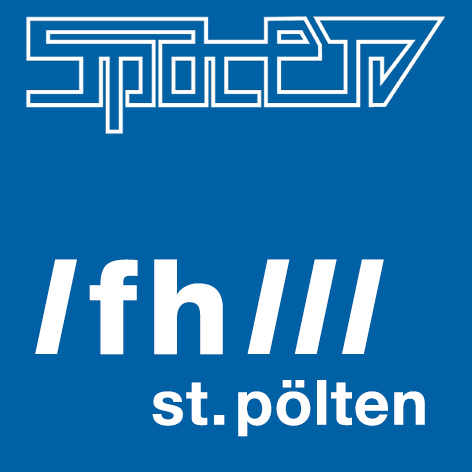Electrical Walks
Christina Kubisch is a member of the first generation of sound artists. Trained as a composer, she has artistically developed numerous techniques including magnetic induction to create her installations. Since 1986, she has also used light as a design element in conjunction with her work with sound. Christina Kubisch’s oeuvre exhibits a process of artistic development that is often described as “synthesis of arts”—on one hand, an exploration of tonal space and the dimension of time in the visual arts; on the other hand, an reconfiguration of the interrelationship between material and form in music. For the Ars Electronica 2010 she developed two new Electrical Walks in Linz. Furthermore three documentations about her last project in the Ruhr-Area are exhibited.
http://www.christinakubisch.de
Walk the factory
3. 9. – 5. 9.
Start: Info Lounge
Christina Kubisch works with the principle of electromagnetic induction. The headphones she’s developed enable wearers to acoustically experience the electromagnetic fields that pervade our surroundings. On this tour through Tabakfabrik Linz, you’ll explore noise that’s normally inaudible—the electromagnetic sounds of the factory’s impressive architecture as well as of the electronic art on display there.
|  Electrical Walks,
|
Electrical Walks,
|  Location: Info Lounge
|
Location: Info Lounge
|  Permalink
Permalink
Walk the city
2. 9. – 7. 9.
Start: Main Square Ö1 Haiti House
The second tour route takes you through downtown Linz. Outfitted with Kubisch’s special headphones and a map indicating points of particular interest, you’re all set for a journey of acoustic discovery. Needless to say, there’s nothing stopping you from taking a few detours off the beaten path, ‘cause one thing’s for sure: you’ll find surprising electromagnetic sounds wherever you go!
|  Electrical Walks,
|
Electrical Walks,
|  Location: Hauptplatz
|
Location: Hauptplatz
|  Permalink
Permalink
Wave Catcher
2. 9. – 7. 9.
To make “Wave Catcher,” the film crew traveled through the northern Ruhr District from November 2009 to March 2010. The selection of shooting locations was made primarily on the basis of acoustic rather than visual criteria. Various situations that come up in everyday life were filmed with both the real ambient sounds audible on site and the electromagnetic sounds received at the same location. The countless traffic arteries and train stations alternate with hidden corners of the inner city, public buildings, construction sites, power plants, high-tension lines, security systems, shopping malls, collections in museums, industrial wastelands, waiting rooms and the occasionally idyllic surrounding countryside. The various sound strata give rise to a discrepancy of perception that calls into question what is familiar and well-known.
Konzept, Regie und elektromagnetische Tonaufnahmen: Christina Kubisch (DE)
Kamera und Schnitt: Peter Simon (DE)
Sound: Eckehard Güther (DE)
This work was commissioned in the context of the project mapping the region for RUHR2010/European cultural capital 2010 by the sculpture museum of Marl and was presented there first in spring 2010.
|  Electrical Walks,
|
Electrical Walks,
|  Location: REPAIR Lounge
|
Location: REPAIR Lounge
|  Permalink
Permalink
Bewegungen nach entfernten Orten
2. 9. – 7. 9.
With her special headphones, Christina Kubisch can detect electromagnetic fields that are normally hidden, amplify them and make them audible. The “Movements to Distant Places” installation consists of electromagnetic field recordings of transportation systems made during a trip through the northern Ruhr istrict in Germany. The Ruhrgebiet is a densely populated area of about 54 cities so close to each other that they almost seem to be one big megalopolis. Public transportation lines are essential to move between the cities: regional and high-speed trains, subways, busses and a complex network of highways. They emit a dense net of different sound layers. Kubisch acoustically reproduces this huge spider’s web in her multichannel installation.
Audiotechnik und Mastering: Eckehard Güther
This work was commissioned in the context of the project mapping the region for RUHR2010/European cultural capital 2010 by the sculpture museum of Marl and was presented there first in spring 2010.
|  Electrical Walks,
|
Electrical Walks,
|  Location: Magazine OG 4
|
Location: Magazine OG 4
|  Permalink
Permalink
Ruhrlandschaften 2010
2. 9. – 7. 9. REPAIR Lounge
A selection of 40 photographs Christina Kubisch took during her travels through the Ruhrgebiet are mounted—arranged in no particular order—on a wall. Just like a visitor to a museum, everyone partaking of these works is issued an audio guide; entering the ID number of a particular image launches the playback of the soundscape that belongs to the image. However, this is not the acoustic sound of the location but rather its magnetic sound. The locations are likewise marked in the form of numbers on a map of the northern Ruhr District. Like participants in a treasure hunt, installation visitors seek, localize and pair the images and the sounds. The sounds are softly transported around the installation space and continually remixed by the open loudspeaker system of the audio guides.
This work was commissioned in the context of the project mapping the region for RUHR2010/European cultural capital 2010 by the sculpture museum of Marl and was presented there first in spring 2010.
|  Electrical Walks,
|
Electrical Walks,
|  Location: REPAIR Lounge
|
Location: REPAIR Lounge
|  Permalink
Permalink



